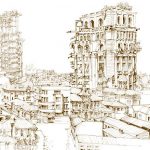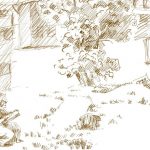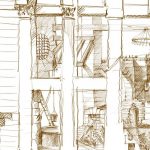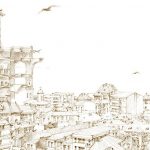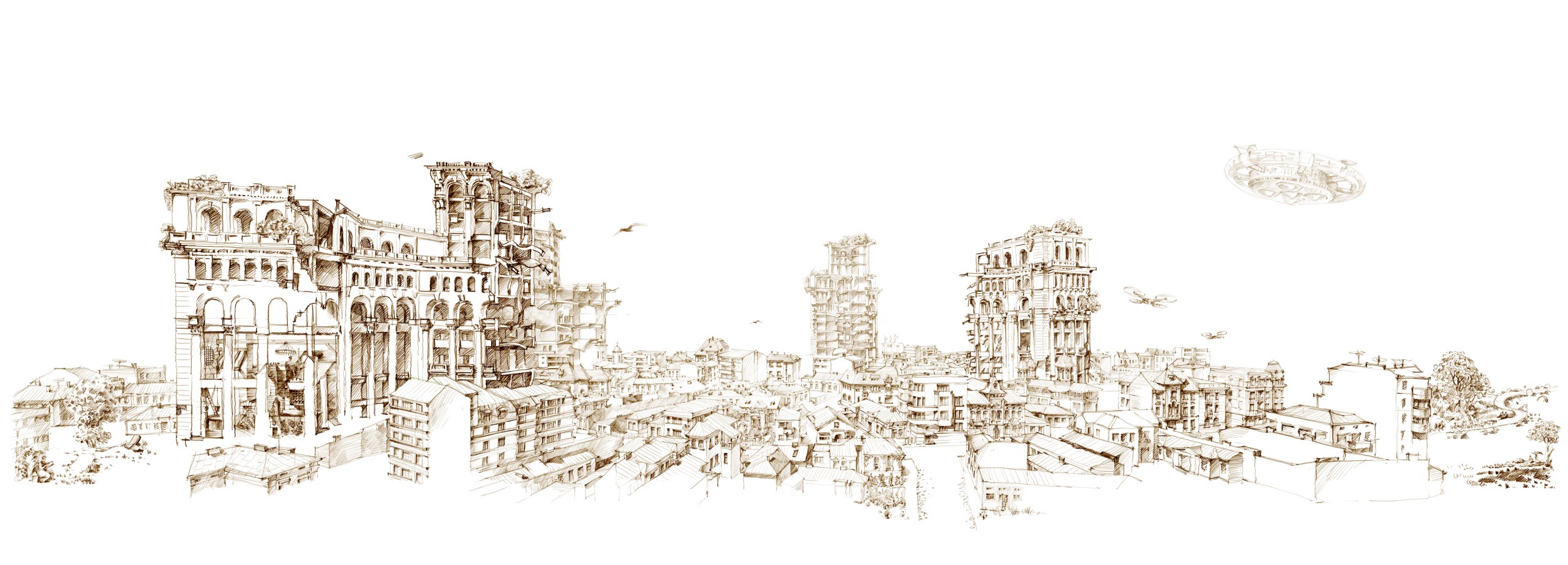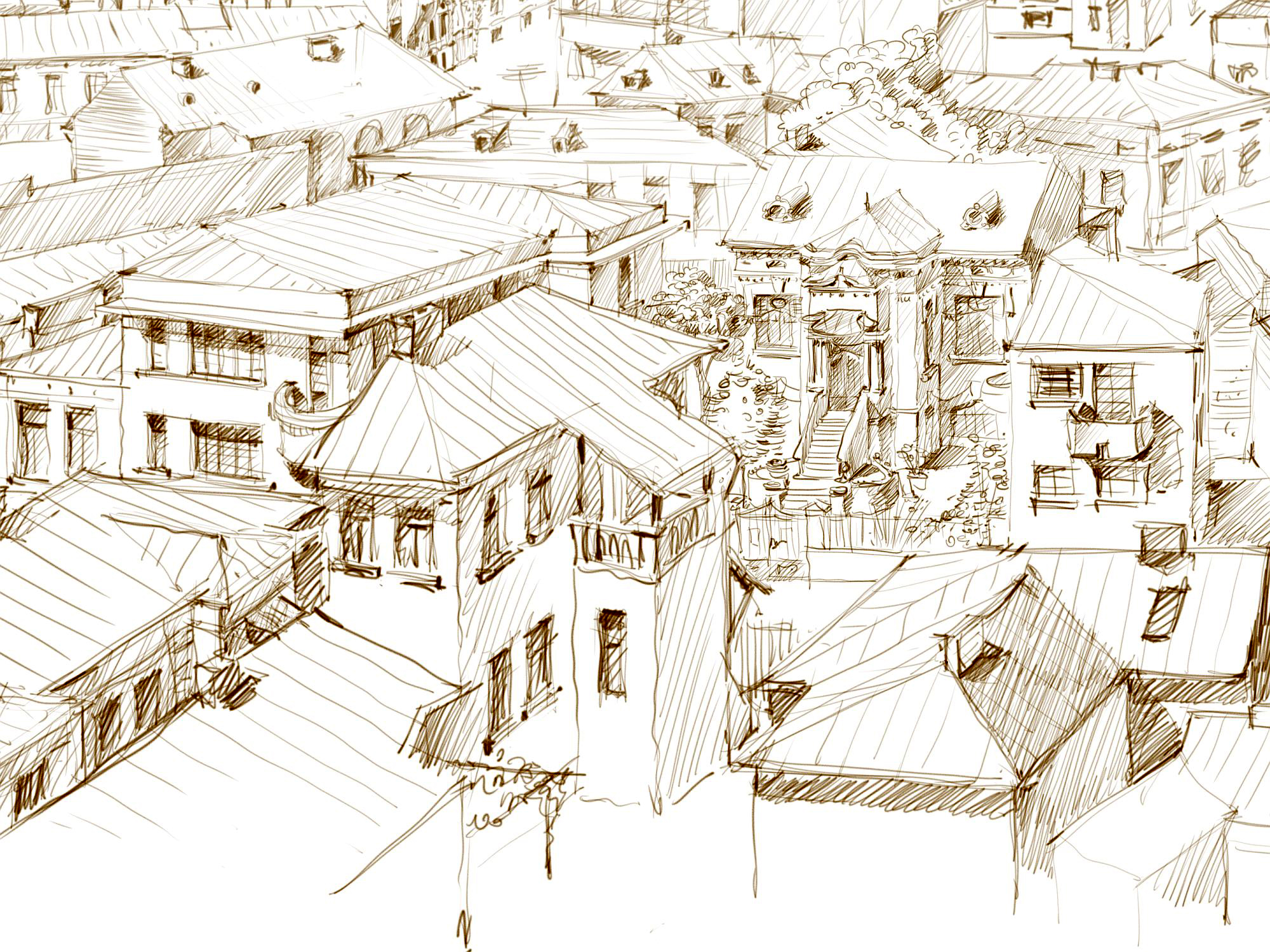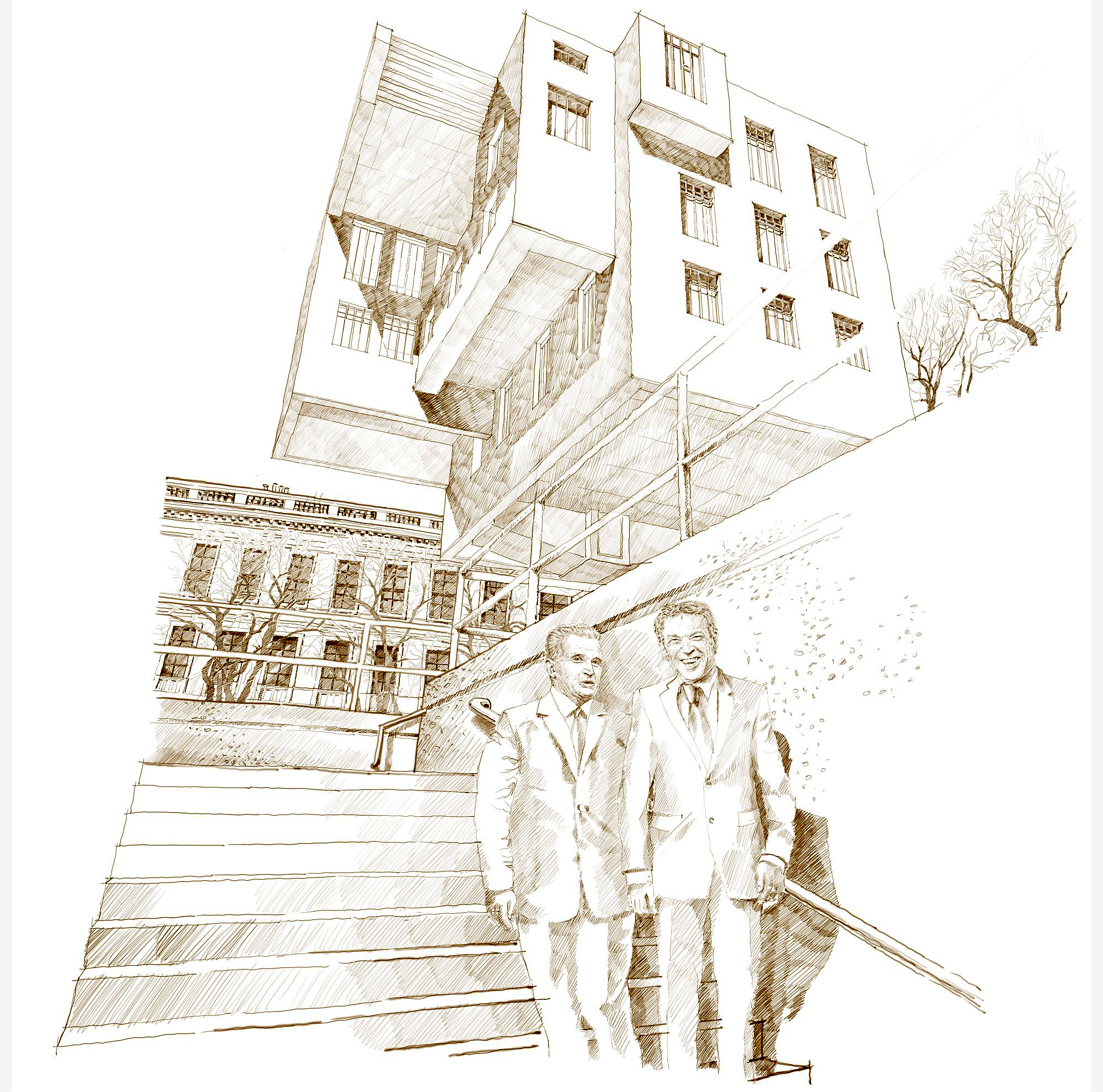In 2019 we organized the “Uranus Now” exhibition about the huge urban destructions and megalomanic projects of Nicolae Ceausescu. We focused on the Uranus neighborhood in Bucharest, almost completely destroyed and the place where the sinister People’s House was built. But we really wanted not to talk only about architecture and heritage, but also about people, about both the drama and the courage and the strength of the inhabitants. Personal interviews and archives were as important to us as reconstructing the physical reality.
Among those with whom I discussed there were also brothers Horia and Tudor Marinescu, at that time children living in the neighborhood, in the house on Orăscu street 22. Tudor is a visual artist, Horia is an architect and a dear friend. Now he lives and works in Vienna. One of the strongest memories of a project that altogether became extremely emotional, is how he told me sorfies about the house in a cafe, drawing at the same time from memory plans and facades: a reconstruction on the spot, with the means of the architect, of the childhood places.
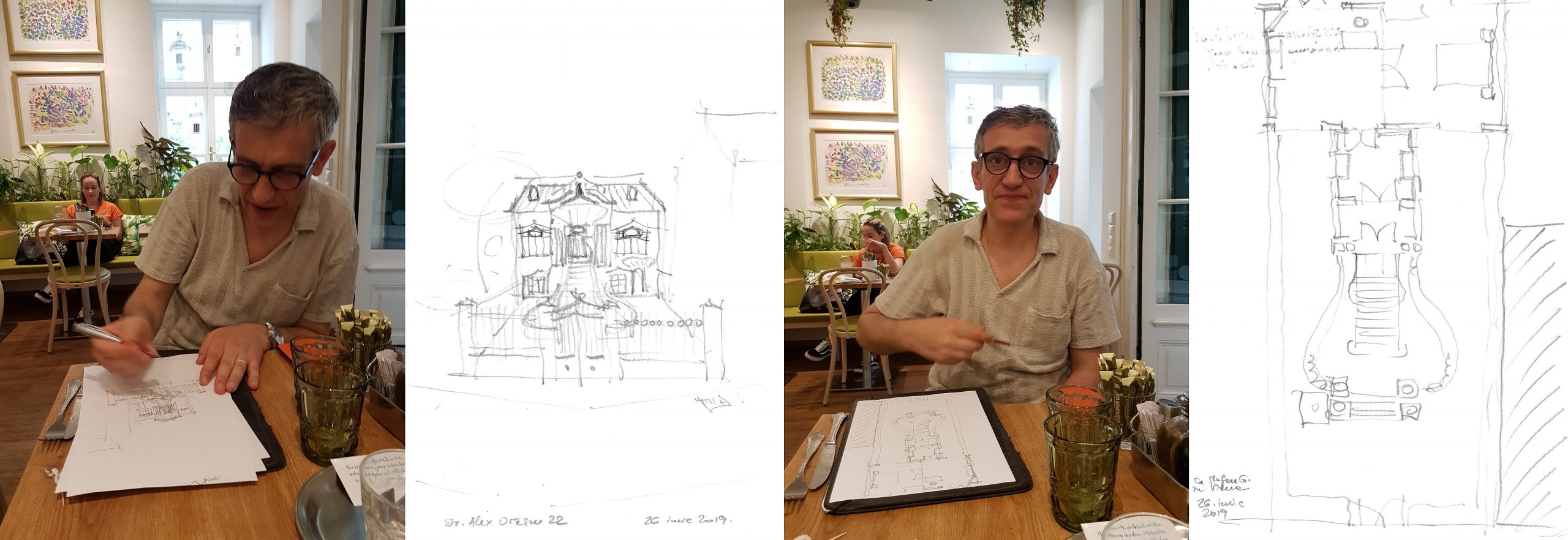 *Vienna, 2019. Real-time sketches of the lost house in 22, Orăscu Street (photo: Ștefan Ghenciulescu)
*Vienna, 2019. Real-time sketches of the lost house in 22, Orăscu Street (photo: Ștefan Ghenciulescu)
We didn’t include any of those sketches in the exhibition for lack of space, as we had to select tfrom a lot of material, such as objects saved from destruction, photos with the family in the house, property documents, building permit, etc.
 *Orăscu Street – Bucharest. House of the Marinescu family (Elena Haschke-Marinescu, Horia and Tudor), in the period before the demolition
*Orăscu Street – Bucharest. House of the Marinescu family (Elena Haschke-Marinescu, Horia and Tudor), in the period before the demolition
We are publishing them now here, together with the drawings from the exhibition organized by Horia in Vienna in June, this year. Titled “The Romanian 1984”, the exhibition is a project of exorcism by drawing of a personal trauma, but also a general cultural and social one. It is an investigation of one’s own past, a reconstruction of the layers of history, but also a transposition in an(other) context: Horia also talks about the Viennese experience, through the famous house designed by Ludwig Wittgenstein, which he turns and populates with the figure of Ceausescu and that of the far-right politician Jörg Haider: a world upside down, from an ethical, social and cultural point of view.
This time, things were the other way around in our way of working – Horia was the one who really wanted to include, in addition to his own works, fragments of “Uranus Now”, contrasting the poetic reflection with the urban, social and architectural research.
Bucharest, Exorcism / The city grows back / Solaris, a better future
Digital etching, 305x110cm, on acid-free 300g paper, Ex. 1/1 , 2020
H.M.: The “House of the People” is shown in a destroyed state, in a gesture of “graphic exorcism”. All happens in an imaginary future, perhaps after the apocalyptical scene from Mircea Cartarescu’s book (where an UFO destroys it, as a final point of the Romanian Revolution).
Similarily to “Solaris”, the sci-fi movie by Tarkovsky, a new city is growing back, between the ruins of the “House of the People”. This new city is the same as the old one, that was demolished in 1984, to make way for the new dictator’s gigantic palace. This new city is being materialised in all details, out of the memories of mine and of other of its former inhabitants.
Along the horizontal of this panorama, there is the street of my childhood, drawn house by house.
Various scenes and elements can be found in the drawing, as intertextual (“intergraphic”) citations: the ruin landscapes of Claude Lorrain, the etchings of Giovanni Battista Piranesi, the Gardens of the Bucharest painter Horia Bernea and scenes from Andrei Tarkovski’s “Solaris”.
Bucharest, exorcism (detail with the reconstruction of a fragment of Orăscu Street and the house at nr. 22).
”Nightmare with Wittgenstein-Haus”
Digital etching, 140x110cm, on acid-free 300g, Ex. 1/1, 2019-2020
H.M.: “There is seemingly no connection between the Romanian dictator Ceausescu and the Austrian politician Haider.
And yet: they did not alone have their birthday both on the 26th of January, but I received my first ID card under the first one, and my first Austrian passport under the second one. The dictatorship of the first one chased me in my childhood and youth, the xenophobia of the second poisoned my student years in Vienna. When, in october 2000, the FPÖ party of Haider was sweared in, as part of a government coalition that generated protests across Europe, and I received in the same time my Austrian passport, I thought that this must be a joke: did I land out of the frying pan and into the fire?
The Wittgenstein House preocuppied me a lot, I wrote an essay and made photos for the architectural magazine Zeppelin. The house symbolises for me the Viennese Modernity and the cosmopolitanism of the city, the sometimes difficult relationship between architecture and philosophy.
But the Wittgenstein House is floating headfirst in my drawing. It stands for an inverted world, in which the ideals of the modernity are replaced with populist relativism.”


